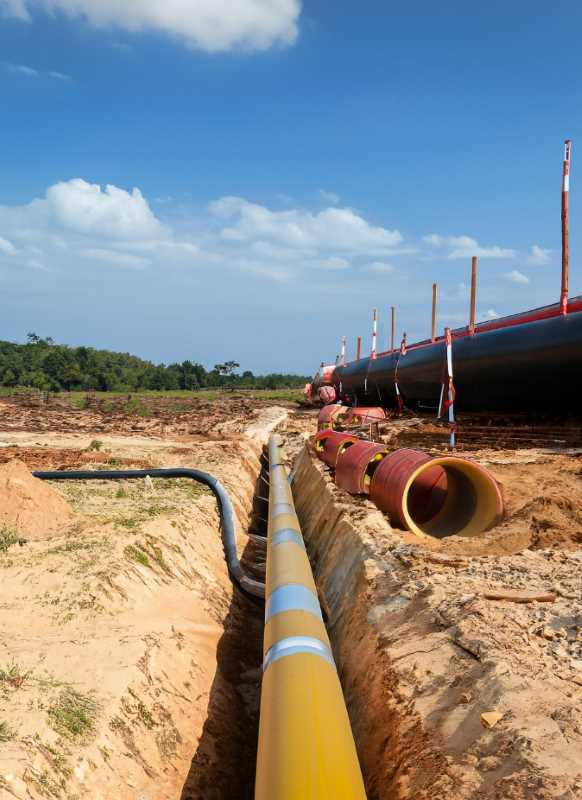The Paradox of Natural Gas in Mexico's South-Southeast
Mexico's south-southeast region is a paradox in the global energy landscape—a treasure trove of natural gas, yet starved of the very resource it abundantly produces. Imagine sitting on a goldmine but lacking the tools to dig! This is not just a local issue; it's a national dilemma.

Mexico, a country known for its rich natural resources, presents a peculiar paradox in its energy sector. While being one of the world's leading consumers of natural gas and relying on it for approximately 60% of its electricity generation, the nation faces a significant infrastructure gap. This is especially the case in the south-southeast region, which ironically is the country's primary producer of natural gas. This article aims to shed light on the challenges and opportunities surrounding the natural gas sector in Mexico, particularly focusing on the south-southeast region.
Production
According to the Mexican Institute of Competitiveness (IMCO), practically all the natural gas extracted in Mexico in 2022 came from the nine states that comprise the south-southeast region: Campeche, Chiapas, Guerrero, Oaxaca, Puebla, Quintana Roo, Tabasco, Veracruz, and Yucatán. This area accounted for an average of 4,804 million cubic feet per day (MMcfd) of natural gas production, with 89% (4,277 MMcfd) hailing from this very region. Campeche, Tabasco, and Veracruz are the leading contributors, responsible for most of this production.
However, this abundant production is mostly funneled through Petróleos Mexicanos (Pemex), the state-owned oil company, which operates nine gas processing centers (CPG) in the region. Pemex consumes around one-fifth of the country's total dry gas supply. Therefore, despite substantial production numbers, the actual natural gas available for non-oil industries and other sectors is much less than what appears on paper.
Infrastructure
Despite its production prowess, the south-southeast region suffers from a glaring lack of transportation infrastructure for natural gas. Even though the length of the gas pipeline network across Mexico increased by 68% between 2012 and 2022, from 11,347 km to 19,600 km, this expansion has been largely confined to the northern and central regions.
For the south-southeast, this means lower pipeline coverage compared to the rest of the country. The result is a self-limiting cycle where the lack of infrastructure restricts access to natural gas, inhibiting growth and investment in industries that are intensive consumers of this vital resource.
Mexico ranks as the seventh-highest country globally in natural gas flaring, as per World Bank estimates. This practice is prevalent in the south-southeast states, attributed by Pemex to the “lack of infrastructure for its use in exploration and production processes.” Not only is this environmentally detrimental, but it's also a waste of a valuable resource. What's more alarming are the reports of illegal burning in critical natural gas fields like Quesqui in Tabasco and Ixachi in Veracruz. In the latter, gas flaring accounts for about 31% of its total production, as of June 2023.

Natural Gas Utilization
According to the Energy Information System (SIE) of the Ministry of Energy, the non-oil sectors in Mexico demanded an average of 6,374 MMcfd of natural gas nationwide in 2021. Astonishingly, only 13.8% (880 MMcfd) of this demand came from the south-southeastern states. With limited access due to infrastructure constraints, these states cannot fully capitalize on their natural resources to attract investment in high-value-added industries like petrochemicals, steel, and advanced manufacturing.
While the south-southeastern states are flush with natural gas reserves, the lack of appropriate infrastructure is preventing this region from becoming an economic powerhouse. The existing pipeline network needs significant expansion to improve the region's accessibility to its natural gas reserves. By investing in this critical infrastructure, not only can the region benefit from an abundance of cheaper, locally sourced natural gas. It can also create a more attractive environment for external investments, thereby driving economic development and improving the wellbeing of its inhabitants.
Conclusion
Mexico's south-southeast region represents a paradox in the global energy landscape: abundant in natural gas yet constrained by its limitations. To resolve this, a focused investment in transportation infrastructure is imperative. Not only would this reduce wasteful practices like gas flaring, but it would also unlock enormous economic potential in a region that, until now, has been largely marginalized despite its natural wealth. The time to act is now; the benefits are clear, and the costs of inaction are far too high.




